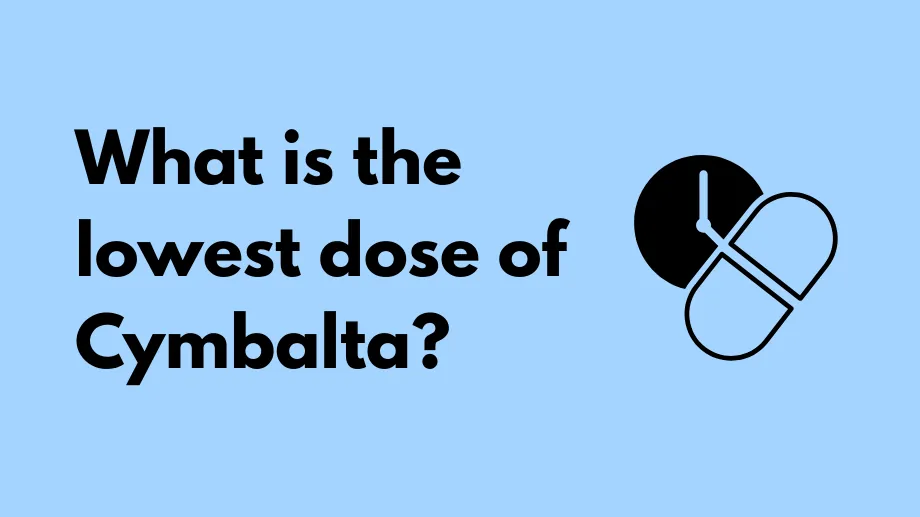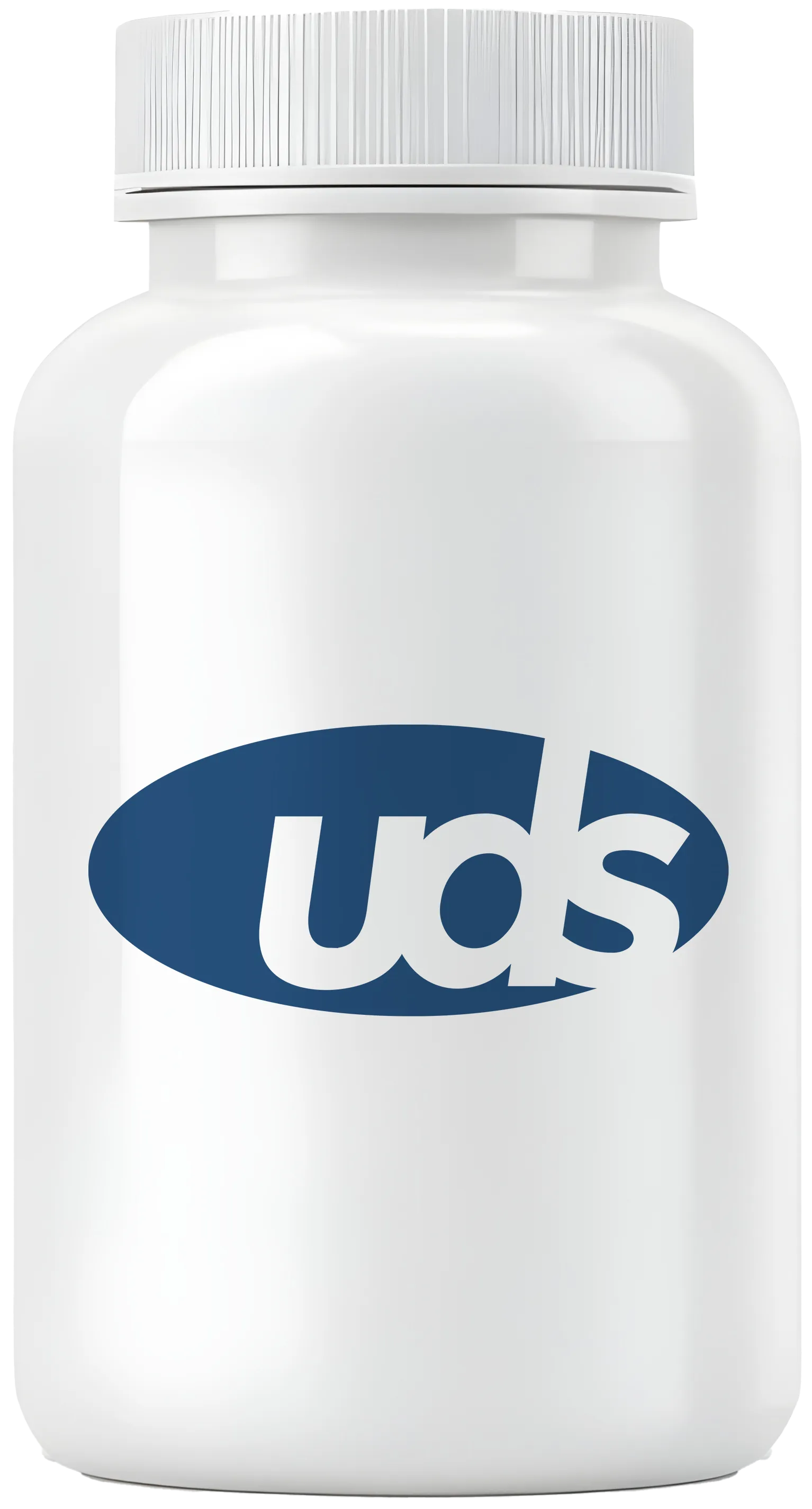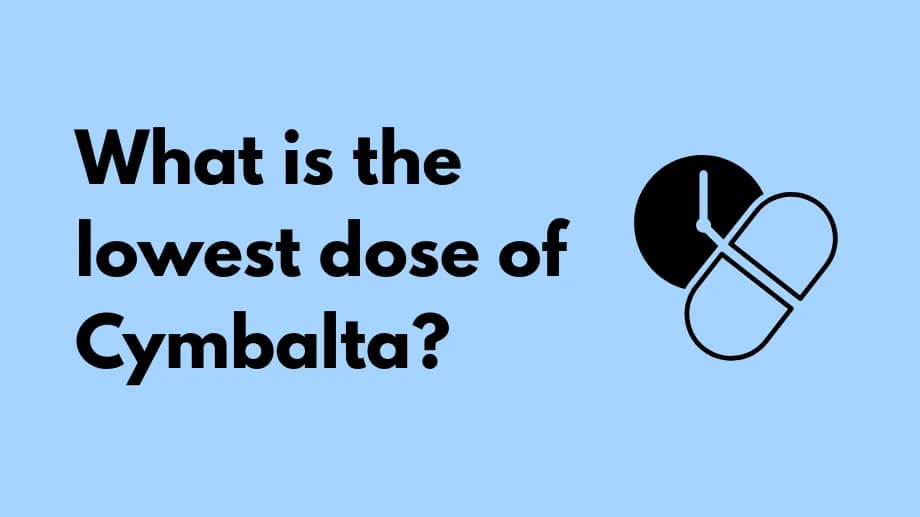What is the lowest dose of Cymbalta?

Cymbalta (duloxetine) is a delayed-release SNRI antidepressant available in 20 mg, 30 mg, and 60 mg capsules. The lowest commercially available dose is 20 mg.
Generalized anxiety disorder (GAD)
- Adults < 65 years: typically start at 60 mg daily; some begin at 30 mg for 1 week then increase to 60 mg. Maximum 120 mg daily.
- Adults ≥ 65 years: start at 30 mg daily for 2 weeks. Maximum 120 mg daily.
- Pediatric (7–17 years): start at 30 mg daily for 2 weeks; may increase by 30 mg increments up to 120 mg. Most remain on 30–60 mg daily.
Major depressive disorder (MDD)
- Adults: start at 40–60 mg daily. Sometimes begin at 30 mg for 1 week, then 60 mg. Maximum 120 mg daily; long-term dose usually 60 mg.
Fibromyalgia
- Adults: start at 30 mg daily for 1 week; increase to 60 mg if needed. Do not exceed 60 mg.
- Adolescents ≥ 13 years: same as adults (30 mg → up to 60 mg).
Chronic musculoskeletal pain
- Start at 30 mg daily for 1 week; increase to 60 mg. Do not exceed 60 mg.
Diabetic peripheral neuropathy
- Adults: 60 mg daily. Some start lower and titrate to 60 mg. Do not exceed 60 mg.
How to take Cymbalta
Take with or without food; swallow capsules whole. If you miss a dose, take it when you remember unless it’s near the next dose—then skip the missed dose.
How Cymbalta works
Duloxetine blocks reuptake of serotonin and norepinephrine, improving mood and reducing pain by increasing these neurotransmitters in the brain.
Shop Medications
Common side effects
- Nausea
- Dry mouth
- Headache
- Drowsiness or fatigue
- Insomnia
- Dizziness
- Constipation or diarrhea
- Decreased appetite
- Increased sweating
- Stomach pain
- Blood pressure changes
Less common side effects
- Blurred vision
- Abnormal heart rate
- Tremor
- Vomiting
- Sexual dysfunction
- Yawning
- Weight changes
Serious side effects
- Suicidal thoughts or behaviors
- Liver injury (jaundice, abdominal pain, dark urine)
- Severe bleeding or bruising
- Serotonin syndrome
- Hyponatremia
- Stevens-Johnson syndrome
- Seizures
- Severe allergic reactions
- Discontinuation syndrome (on abrupt stop)
Who should not take Cymbalta?
- Recent MAOI use (within 14 days), linezolid, or methylene blue
- Chronic liver disease or cirrhosis
- Allergy to duloxetine
- Heart problems, kidney disease, epilepsy, bipolar disorder, heavy alcohol use, narrow-angle glaucoma, bleeding disorders
- Pregnancy or breastfeeding without provider approval
Boxed Warning
Increased risk of suicidal thoughts and behaviors in children and young adults < 25 years, especially early in treatment or with dose changes.
Drug interactions
- MAOIs, linezolid, methylene blue
- Ciprofloxacin, fluvoxamine
- Warfarin and other anticoagulants
- NSAIDs (aspirin, ibuprofen, naproxen)
- St. John’s wort
- Other antidepressants (SSRIs, SNRIs, TCAs)
- Thioridazine
- Opioids and triptans
- Amphetamines
Sources
- Cymbalta [package insert]. Lilly USA, LLC. Last updated 8/2023. Accessed Apr 11, 2025.
- Duloxetine [package insert]. American Health Packaging. Last updated 3/2025. Accessed Apr 11, 2025.


